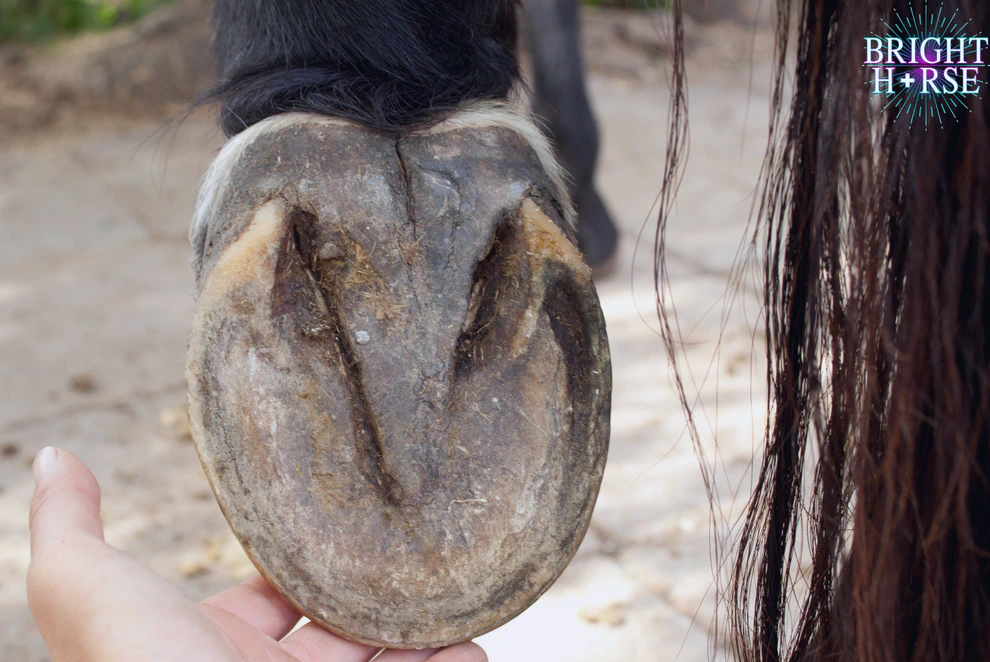What If Your Horse’s Hooves Didn’t Need Shoes?
Horses wear shoes, it’s part of what we consider responsible horse care. For generations, routine application of metal shoes has been seen not only as standard practice but as a hallmark of good husbandry. It’s so normalised that many of us forget: applying shoes is a treatment, not a biological necessity. And yet, for many horse owners, the idea of a horse working comfortably without shoes still sounds almost impossible.
But horses aren’t born wearing shoes. Most aren’t shod until they’re two, three, or even four years old. In those early formative years, they function just fine without metal on their feet. So why do we assume that they suddenly need them as they grow older? What changes physiologically, behaviourally, or environmentally that requires us to begin altering their natural hoof structure with steel?
We’ve been taught from childhood that horseshoes are essential for protection, support, and performance. But historically, the application of shoes arose during times of intense demand warfare, transport, agriculture when horses were worked hard, often beyond their physical limits, for human gain. Shoes were developed to keep exhausted animals functioning just long enough to finish their task not necessarily to support long-term hoof health.
We no longer ride 1,000 kilometres into battle or pull heavy loads on cobbled streets. And yet, the application of shoes remains deeply embedded in equestrian culture, symbolising care and responsibility. To neglect a horse’s feet is seen as one of the gravest sins in horsemanship. But does care always have to mean shoeing? Or is it time to look again at what healthy hoof care truly means?
What if that belief deserves a second look? What if nature had already equipped the horse with everything it needs to move, absorb shock, and stay sound without metal nailed to its feet? And what if the belief that horses need shoes for modern riding isn’t as evidence-based as we once thought?
In recent years, a growing number of owners, farriers, and behaviour professionals have begun asking these very questions and the answers may surprise you.
The Story We Were Told
Traditional wisdom, which stems from pre-agricultural revolution practices, tells us that shoes are needed to prevent wear, protect from stone bruises, and support horses working on hard surfaces. All of these concerns were relevant during a time when horses pulled carriages, worked in agriculture, and travelled vast distances on cobbled streets and undeveloped tracks. But times have changed, and so have the roles of our horses.
This story is deeply rooted in equestrian traditions passed down for generations, reinforced by textbooks, riding schools, farrier guilds, and even veterinary guidance. It might surprise you to learn that many farrier guilds still place a strong focus on traditional blacksmith techniques skills deeply respected, of course, but their emphasis is on forge work, not necessarily on hoof biology. As someone who has worked a forge, I know just how skilled and labour-intensive that craft is. Forging is practically an engineering degree in itself. But it is not the same as understanding the biological function of the hoof.
Many of us were taught that unshod horses were fine in the feral or free-living environment but couldn’t possibly cope with modern work, roads, or rider weight without metal protection. We feared cracked hooves, horses in pain, sore soles, and lameness. And understandably so the idea of “going barefoot” often leaves owners feeling anxious about the transition. I’ve worked with many owners on this path, and they all share the same concerns:
- Will my horse be sore?
- Will their hooves hold up under the work?
- Am I doing the right thing?
Interestingly, it’s this deep sense of care that often keeps horses in shoes not a lack of concern, but the depth of it. We want to protect them, and the unknown can feel risky. When we do take our horses barefoot, many of us suddenly become experts in hoof care overnight. We scrutinise every chip, every step, every frog shape and while this heightened awareness can be empowering, I would argue that we should all look at our horses’ hooves with that level of attention, whether shod or barefoot.
But what if this common practice isn’t the best choice for your horse’s long-term soundness? What if those very shoes, while intended to protect, may actually contribute to problems we’ve accepted as normal: joint stress, poor circulation, underdeveloped internal hoof structures, and recurring lameness?
The Biology of a Bare Hoof
The equine hoof is not a static block of keratin (Keratin a fibrous protein forming the main structural constituent of hair, feathers, hoofs, claws, some horns, some things we call horns are actually teeth! Believe it or not!) it’s a dynamic, living structure designed to expand and contract with every step. When the horse loads their leg and hoof, the soft tissue and hoof wall extactly expand outwards absobing the weight distribution.
When the hoof lands heel-first, a cascade of healthy function follows:
- Shock is absorbed
- Blood is pumped through the foot
- The internal tissues (like the digital cushion and lateral cartilages) are stimulated to stay strong.
This expansion and contraction isn’t just helpful it’s essential to equine hoof health.
When a horse wears shoes, this mechanism is disrupted. Metal shoes restrict natural movement, suspend the foot off the ground, and reduce ground contact. As a result, circulation is reduced, shock is less efficiently absorbed, and critical tissues begin to atrophy. Over time, the hoof’s ability to support the horse from within diminishes, increasing the risk of issues like navicular syndrome, arthritis, pedal bone rotation, and chronic lameness.
But What About Roadwork and Performance?
It’s a valid concern most horse owners express when they explore barefoot. After all, modern horses work on a wide variety of surfaces, from tarmac and gravel to arenas and trails. But I would gently challenge that concern with experience: my own horse regularly completes 12–14km rides on tarmac barefoot, with no issue. I also trim Thoroughbred ex-racehorses who now compete in endurance events at 40km barefoot successfully and soundly.
What’s important to remember here is that these hooves weren’t “ready” by chance. They were trained and stimulated over months of consistent, thoughtful conditioning. This is how we should approach all of the horse’s musculoskeletal system and cardiovascular fitness not just for the hoof, but for the entire body.
Barefoot isn’t about removing shoes and hoping for the best. It’s about preparing the hoof to function as it was biologically designed to. Just as we prepare a horse’s muscles, heart, and lungs for specific work, we should prepare the hoof to meet those same demands. Historically, shoes were applied when conditioning wasn’t possible military horses needed to travel to battle, arrive sound, fight, and return. There was no time for gradual hoof conditioning.
Today, our horses don’t face those extremes. We now understand and value careful conditioning, physiotherapy, balanced nutrition, emotional wellbeing, proper tack fitting, and rest. When a horse is transitioned slowly, trimmed appropriately, and supported throughout the process, their hooves can become not only functional but exceptional.
Barefoot horses that are transitioned carefully, trimmed appropriately, and allowed to develop strong, thick soles and healthy frogs can perform confidently on roads, gravel, and even in high-level competition.
In fact, many horses exhibit improved movement, reduced joint strain, and fewer injuries once transitioned to barefoot. Roadwork can actually stimulate hoof strength when approached gradually and with good nutrition, regular movement, and trims based on natural wear patterns.
Listening to the Hoof
One powerful takeaway from years of working with barefoot horses is that the hoof tells us what it needs. When we understand the biology and anatomy, we realise that the hoof is doing exactly what it’s designed to do. And when it doesn’t, that also tells us something important something’s not right, and it’s our job to support the hoof in finding balance again.
It is even the case that through careful observation, minimal interference, and correct trimming, hooves can often self-correct. This concept underpins my approach,Bright Hoof Approach, an approach that respects the hoof’s own feedback mechanisms rather than imposing an artificial shape. We, as humans, should not assume that we can dictate what the hoof should look like by forcing symmetrical or idealised shapes. Instead, we should read the hoof at that moment in time and support it through small, considered changes.
This is what supports long-term soundness, performance, and comfort. It’s not about achieving a picture-perfect hoof, but about promoting a biologically appropriate one that works for that individual horse, in that moment, under those specific conditions.
Hooves are capable of regenerating, reshaping, and healing when we stop over-managing them. Just like many aspects of the horse world humans are often the problem. By stepping back and allowing the hoof to function as it’s biologically intended, we give it the chance to repair, rebuild, and realign. Many chronic lameness cases have been reversed not through aggressive intervention, but by giving the hoof space, time, and the right environment to return to balance. Healing needs time not cutting.
The key is not to do more it’s to do what’s necessary and nothing more. Precision, patience, and compassion always yield better results than force or over-correction.
From Belief to Biology: A Shift in Perspective
Owners often fear that without shoes, hooves will wear down, crack, or become painful. These fears are understandable we love our horses and want to protect them. But science and practical experience are showing us that, in many cases, shoes may be preventing the very development that protects the hoof. Barefoot is not just for ‘pasture pets’ from eventing and show jumping to endurance riding, many horses are not only coping barefoot, but excelling with this approach.
When hooves are allowed to function as they were designed landing heel-first, absorbing shock, circulating blood they adapt and strengthen. They become more resilient, not less. Many hoof issues we think of as inevitable consequences of age or workload may, in fact, be preventable with natural hoof care.
Case Studies and Real-World Results
From competitive endurance horses to retired field companions, many horses have successfully transitioned to barefoot and gone on to thrive. In fact, some owners only discovered barefoot after their horses failed to stay sound in shoes. It was a last resort but it became a turning point.
Martini: Spanish Riding School Training Dressage Horse
Martini, a Spanish horse, had been shod and trimmed without following the Bright Hoof Approach. He was underrun in the heels, long in the toe, and in visible discomfort from poor trims. When I first met him, he struggled to hold his feet up because he was so unbalanced. He also had a large crack in one hoof. Over four months, I slowly improved his balance by reading what his hoof told me it needed I did not dictate a trim based on an ideal shape. The result was greater stability and comfort.
Maple: Ex-Racehorse Turned Endurance Rider
Maple had struggled with hoof handling. After losing many shoes and kicking out at farriers, I was called in to help her begin her barefoot journey and improve her behaviour. Her feet were poor, broken, and chipped. We made very slow, deliberate changes to her balance while her dedicated owner supported hoof conditioning through hand-walking and stimulation. Over time, her balance improved and the strain on her ligaments and tendons was reduced.
Elvis: Friesian Dressage Horse
Elvis is a heavy draft breed, and often misunderstood drafts like Friesians need a larger base to carry their weight. Elvis had such an aversion to the farrier that he refused to pick up his feet. Over three months we shaped his behaviour so that he became safe and comfortable to handle. His feet had large flares and frequent cracks, but instead of cutting them back aggressively, I trimmed according to what his hooves communicated. Over time, I slowly reduced the flares. By month three, his feet no longer cracked or broke, and the flares were gone.
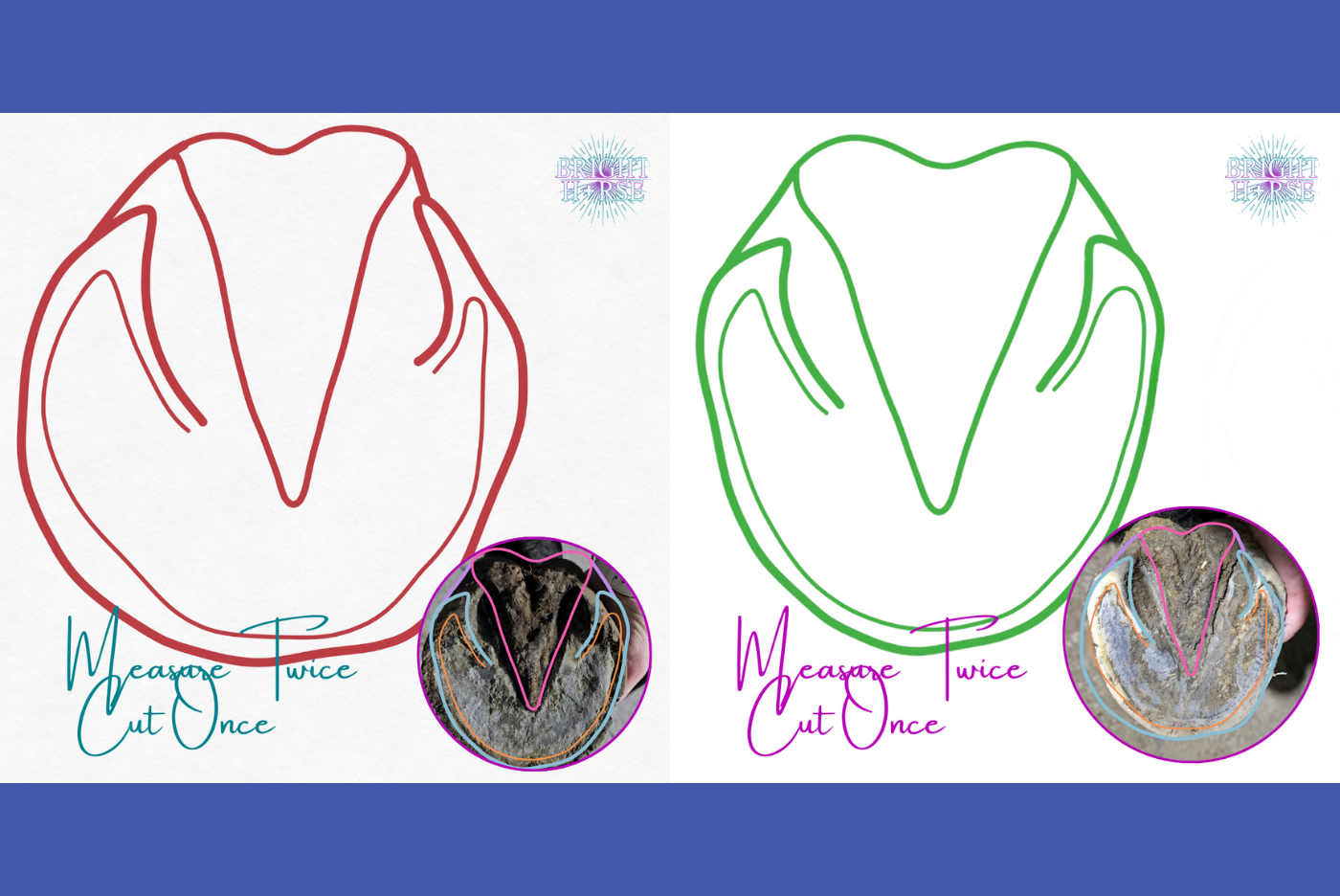
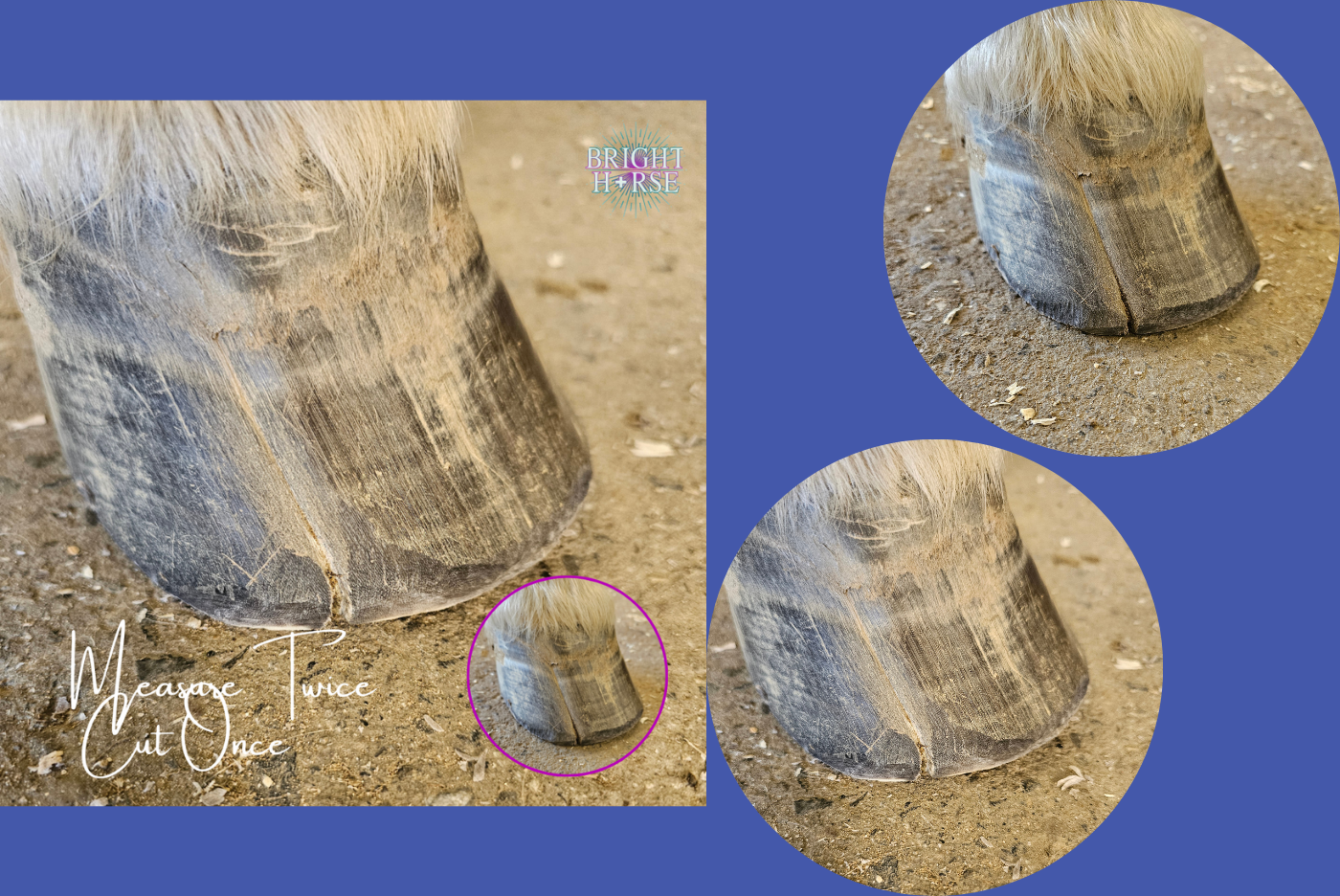
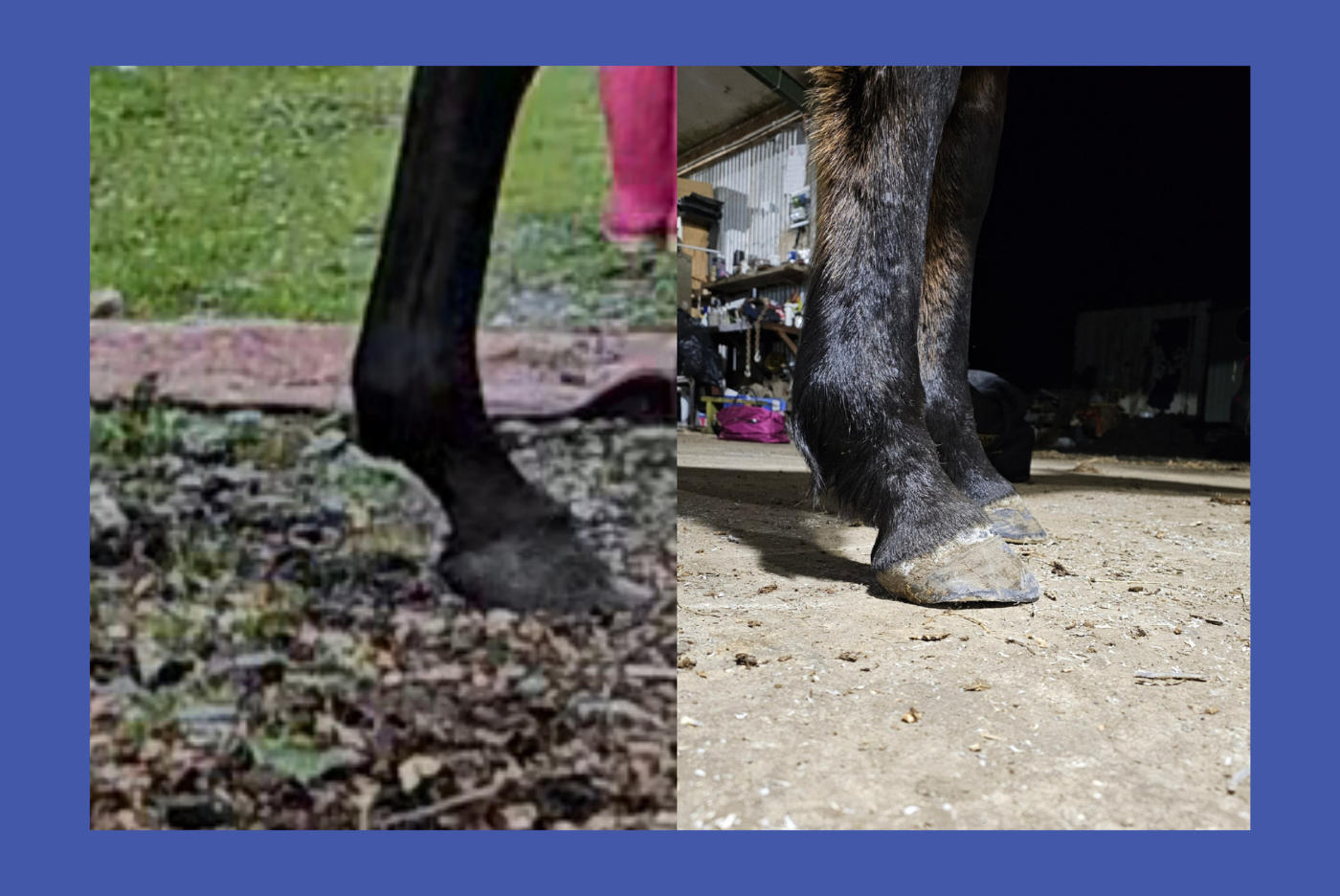
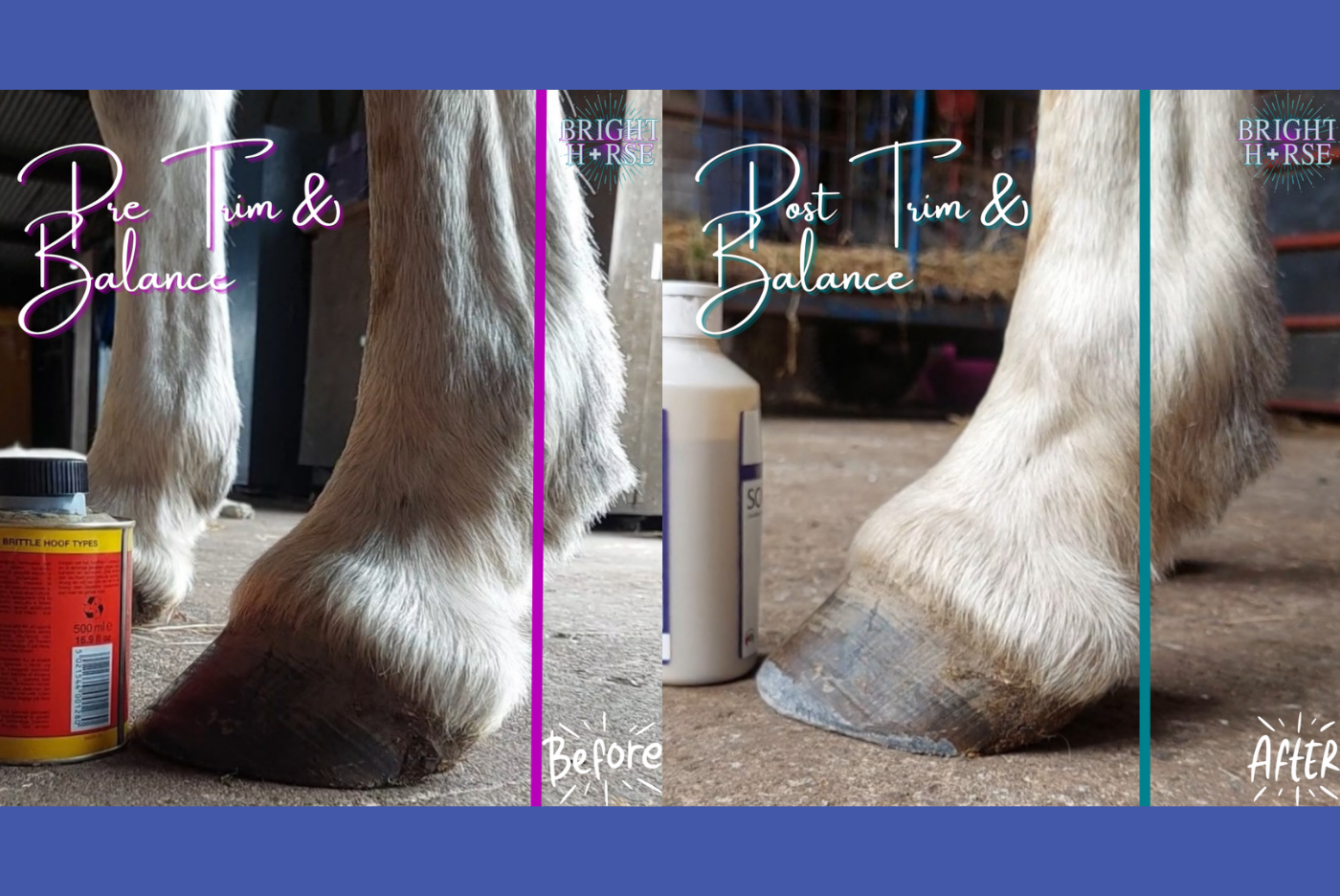
Stories abound of horses recovering from long-term issues once given the chance to go barefoot with proper support. The key is education, guidance, and patience. Just as hooves take time to deteriorate, they also need time to rebuild. But the results soundness, strength, and natural movement are worth it.
A Kinder Step Forward
The barefoot approach isn’t about abandoning care, if anything it opens our eyes to improved care and welfare for our horses.
Keeping your horse barefoot is about deepening our understanding of the hoof and supporting it in the most natural, biologically aligned way possible. It’s about trusting the horse’s innate design and choosing methods grounded in compassion, clinical insight, and long-term wellbeing.
If you’re curious about what barefoot could mean for your horse, you’re not alone. More and more horse owners are exploring this path not because it’s trendy, but because it works.
7 Things Every Horse Owner Should Know Before Going Barefoot
Thinking about taking your horse barefoot? You’re not alone… For many owners, the idea of removing shoes feels daunting. Will their hooves crack? Will they be sore? Can they still perform? These worries are completely natural and they can leave you feeling unsure of what’s best for your horse.
The good news? Going barefoot isn’t about doing less for your horse it’s about giving them the right care, in the right way, with patience and support. With a thoughtful approach, barefoot horses can not only cope, but thrive.
My free guide, “7 Things Every Horse Owner Should Know Before Going Barefoot”, will walk you through the essentials. Inside, you’ll discover compassionate, science-based principles that explain how hooves adapt, what role nutrition and behaviour play, and how to support your horse every step of the journey.
This quick, practical checklist will help you:
- Understand the biggest myths about barefoot care
- Learn how conditioning strengthens hooves over time
- Recognise what your horse’s hooves are really telling you
- See why behaviour, diet, and lifestyle matter as much as trimming
Take the first step toward healthier hooves, better performance, and a more confident partnership with your horse.
👉 Sign up below to get your copy and you’ll also receive a supportive 6-part email series with tips, insights, and encouragement to help you and your horse succeed on the barefoot journey.

